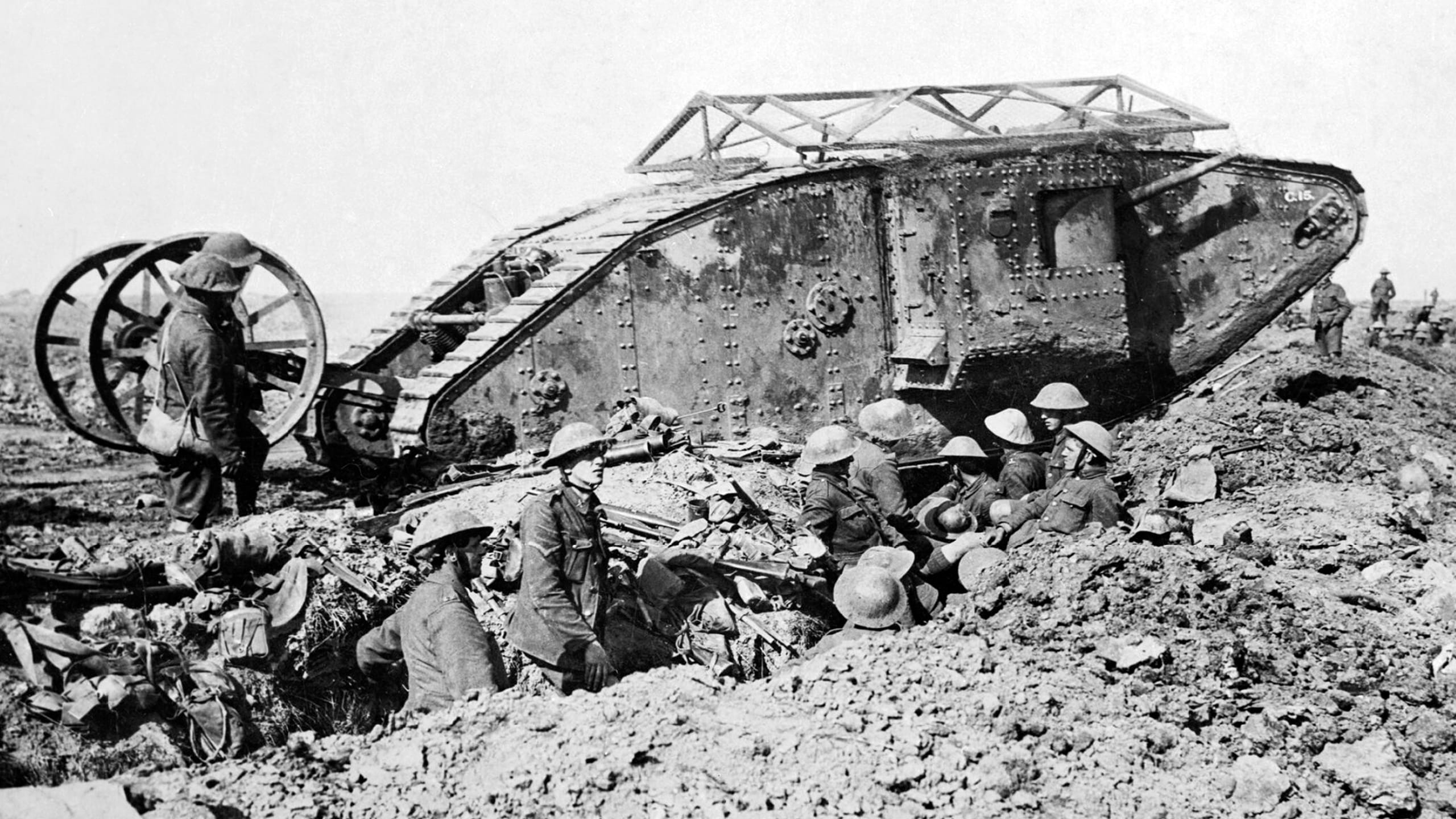It was 0600 on 15 September 1916, and the defending members of the Kaiser’s First Army in France were chronically exhausted. Poison gas, machine gun fire, cold food, trench foot, and unimaginable volumes of artillery had left those that survived fractious and scarred. The mud was so thick and so deep that it swallowed men alive. Rats the size of housecats feasted on the dead.
The Battle of Flers-Courcelette was a vision of hell. Sadly, one of many in the First World War.
After two years of bitter combat, these hardened veterans presumed they had seen it all. Then on this fateful morning the fog was pierced by the cursed bugles as British officers got their own haggard troops up and ready to go over the top. The day’s festivities were preceded by the obligatory suffocating artillery barrage. And then the German defenders heard something else.
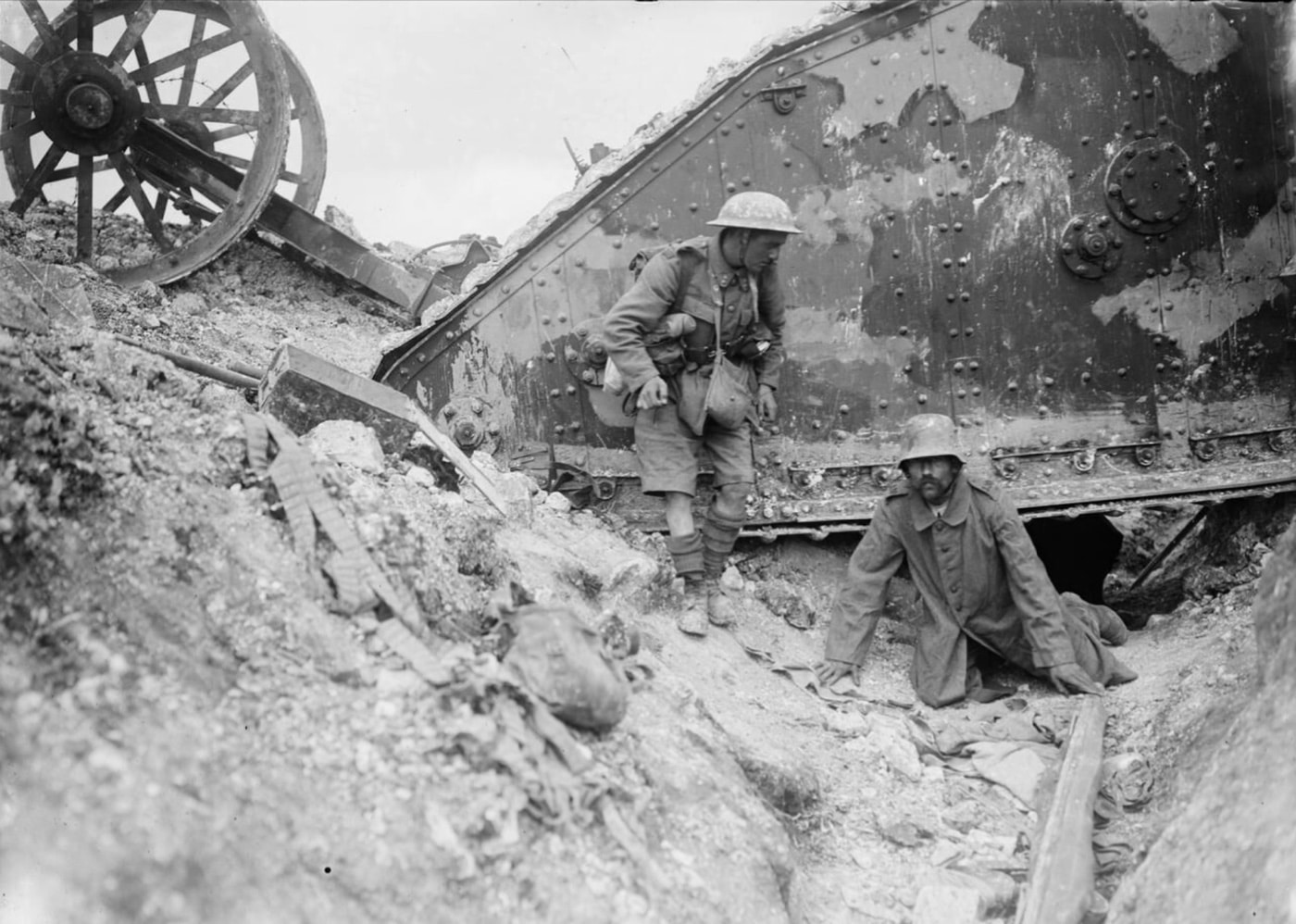
The sound was a deep rumble enhanced by an unnatural foreign mechanical clanking of steel on steel. This was something fresh and new. Nerves already stretched to their limits threatened to snap. Then, out of the mist, rolled the most otherworldly diabolical machines.
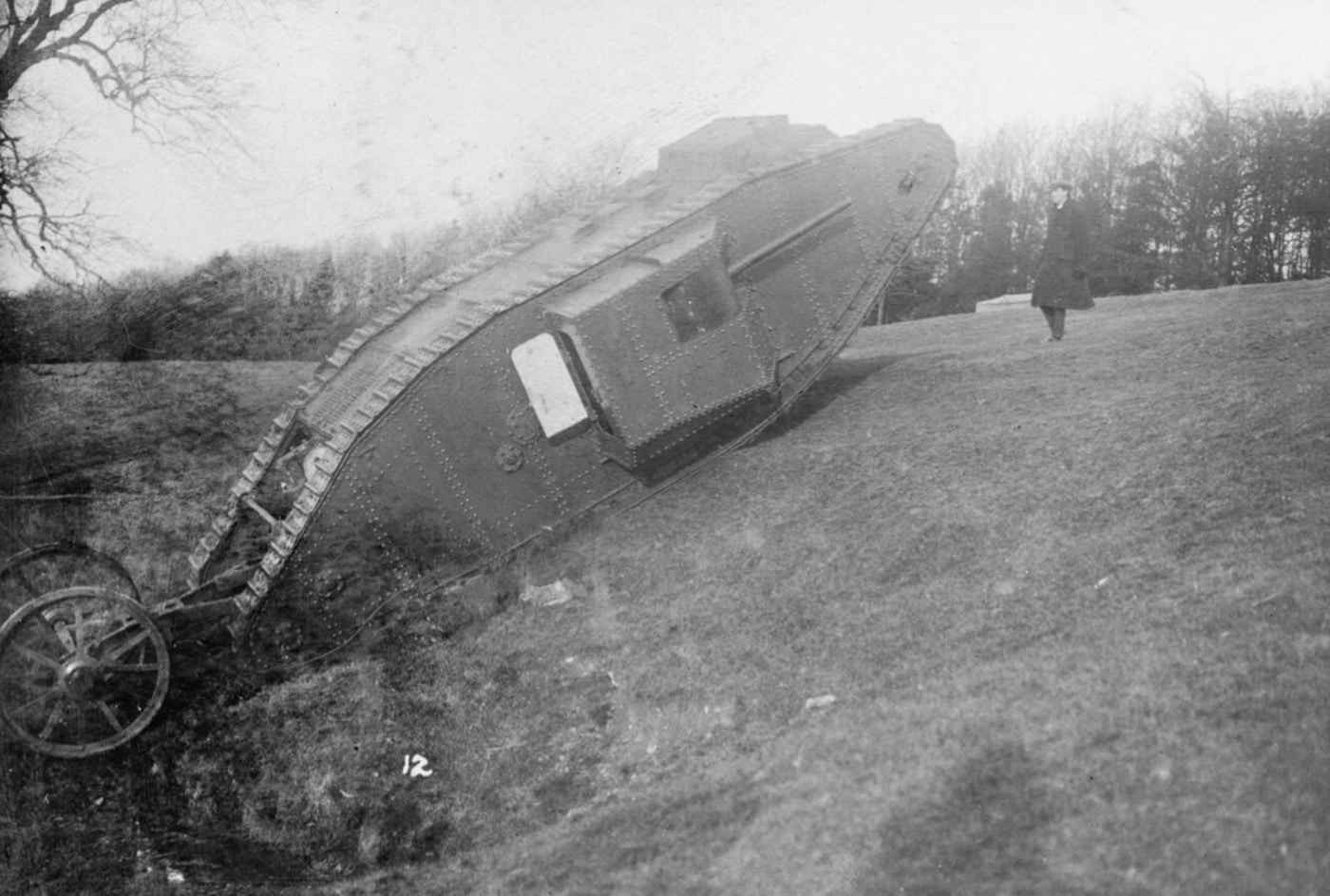
These horrific iron monsters did not look like human contrivances. Massive steel rhomboids crept across no-man’s land, crushing the copious wire obstacles like they weren’t there. Rifle and machinegun fire splattered harmlessly against their armored hides. A substantial number of these veteran German soldiers just threw down their weapons and fled. The Kaiser’s First Army had just suffered its rude introduction to the modern tank.
Details on the Mark I Tank
There were only four British Mk I tanks used in that first combat assault in support of New Zealand troops during the overarching Battle of the Somme. At the end of that first day, two of the four had been destroyed. However, the firepower and shock effect they brought to the WWI battlefield put the Germans on the back foot. This was indeed something both radical and revolutionary.
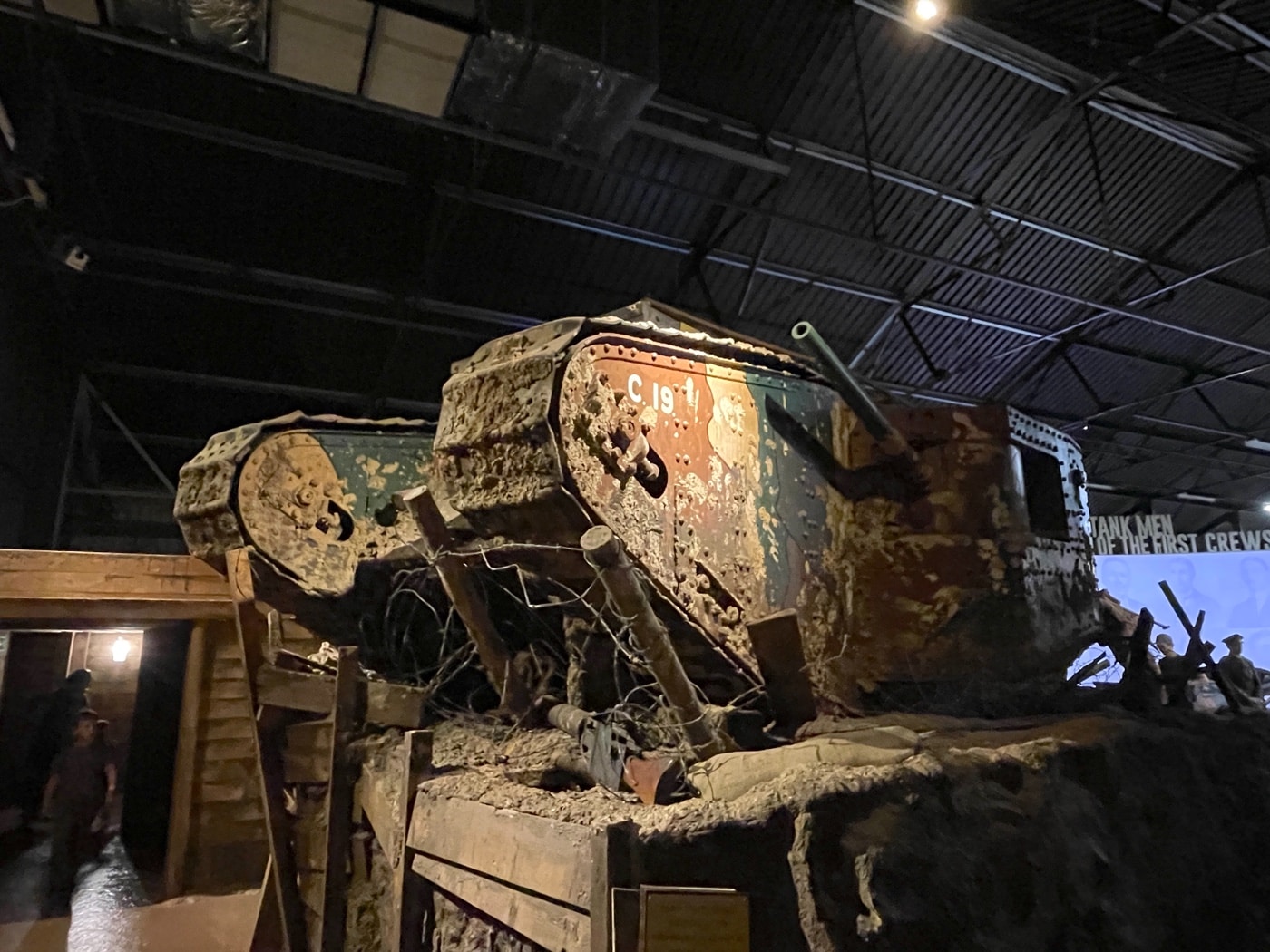
Those first armored vehicles were actually inspired by the Royal Navy. The mission was to allow British troops to advance behind armor plate in the face of suffocating enemy fire. Winston Churchill was an early proponent and played a critical role in their development. Drawing upon nautical inspirations, those first Mk I’s spawned from something called the Landship Committee. Early versions indeed seemed a bit like terrestrial warships.
A Truly Heavy Tank
The Mk I weighed 28 tons and had a maximum speed of 3.7 miles per hour. It carried 50 gallons of petrol and had a maximum combat range of 23.6 miles. Not that it mattered.
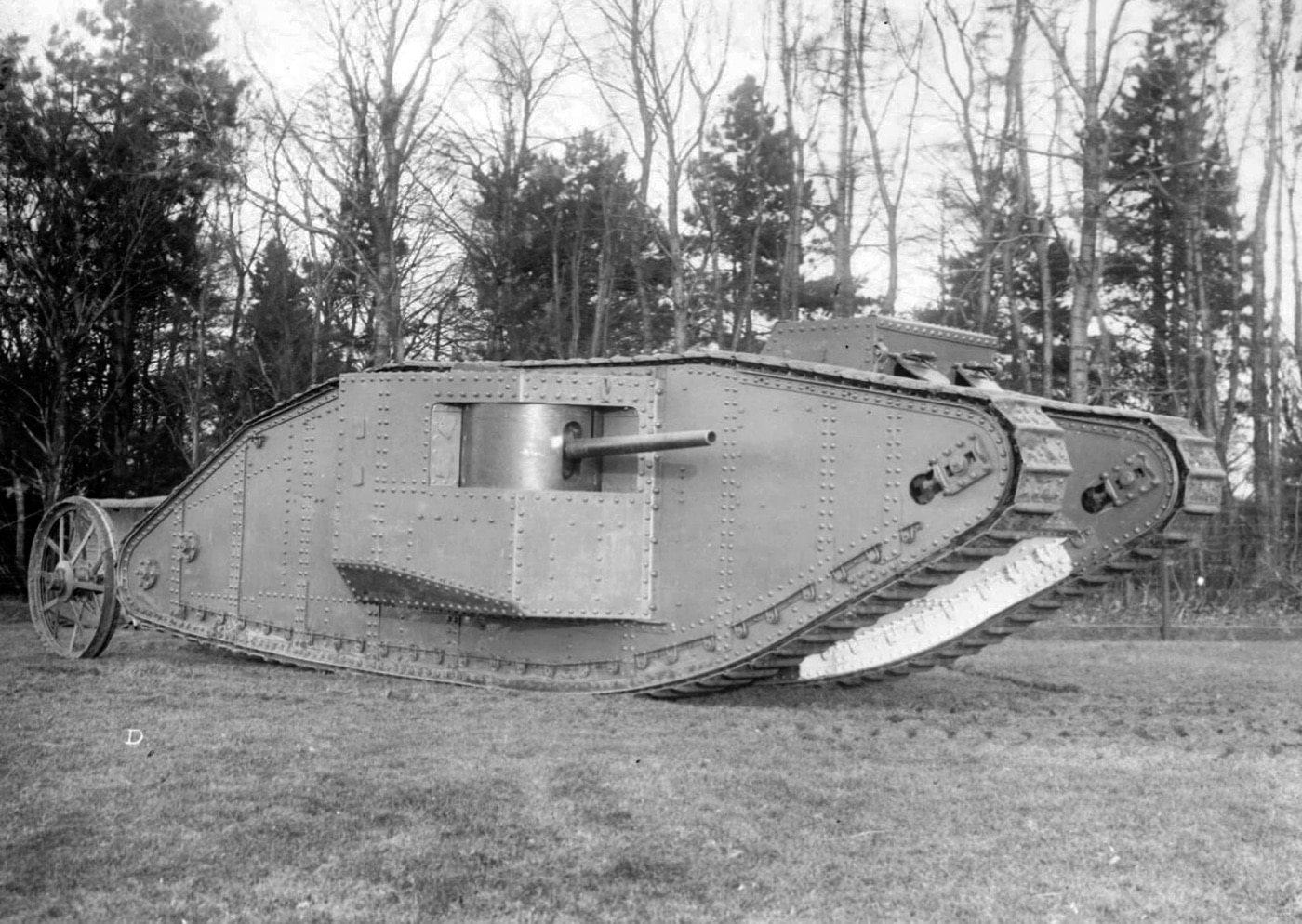
These primitive machines represented untested technology. They broke down quite a lot. That and nobody had any clue how best to use them in action.
Male and Female Gendered Tanks
Incorporating a turret would have made the vehicles too top-heavy to traverse enemy trenches. As a result, the tank’s primary weapons were located in sponsons on each side. Those first Mk I’s came in two broad flavors.
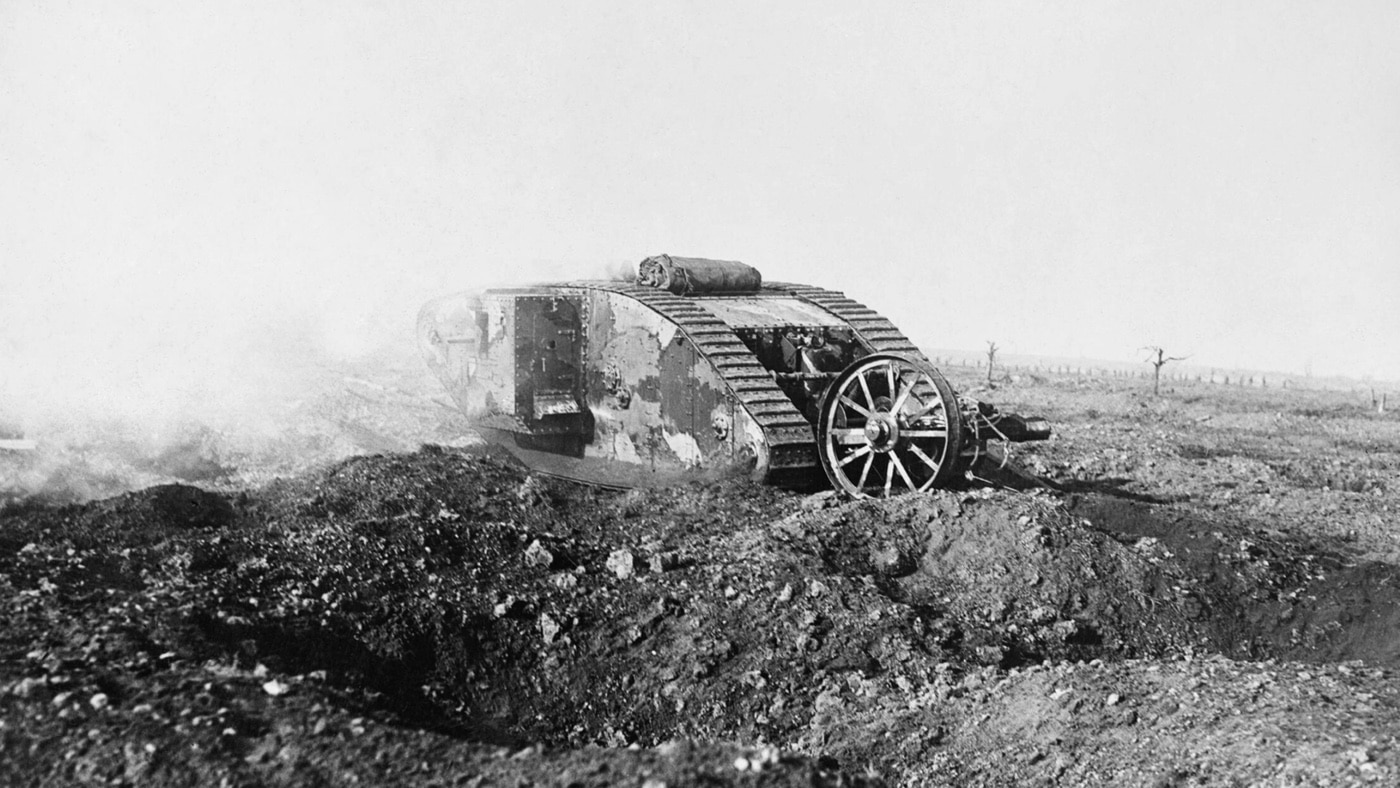
One type dubbed the “Male” version featured a 6-pounder quick-firing Hotchkiss cannon both port and starboard. The “Female” variant was equipped with four .303 Vickers belt-fed machineguns instead. The Male tank also had three .303 Hotchkiss machine guns for close-in defense, while the Female sported a single .303 Hotchkiss.
Origins of the Tank Name
The name “tank” itself represented a nifty bit of subterfuge. The Mk I was developed in utmost secrecy. Those closely-guarded first examples were delivered to the front under canvas covers. When curious Tommies inquired they were told that these tarp-covered things were simply “tanks.” Troopers assumed they were water tanks, but the name obviously stuck.
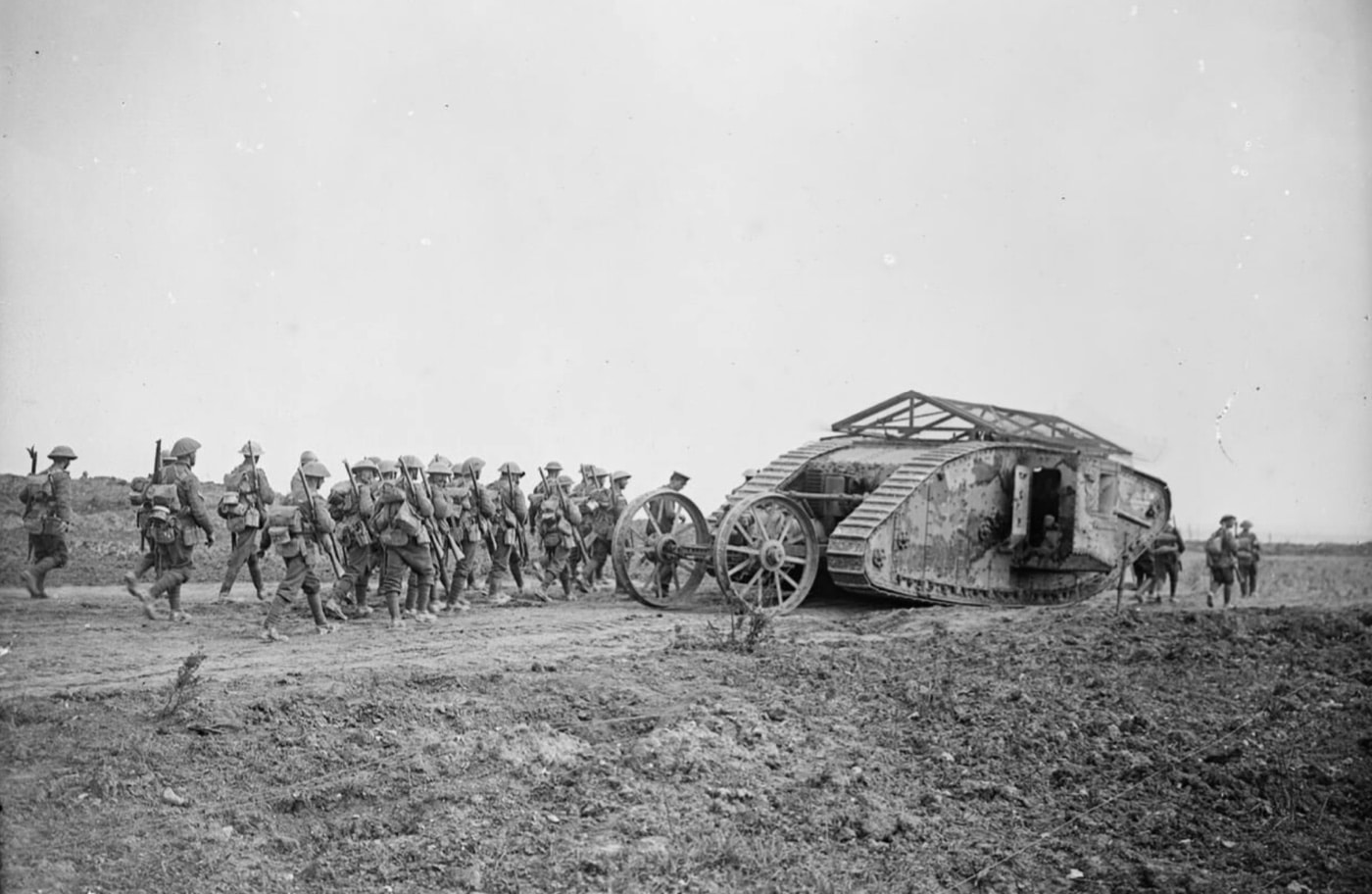
Mk I Tanks — Pretty Crummy Duty
Mk I tanks supported a crew of eight. The distribution of duties had that distinctive nautical flavor. There were actually two drivers, one of whom doubled as the vehicle commander. Steering was accomplished by modulating the relative speed of each track. There was also a massive pair of wheels that dragged behind the thing to supposedly helped sharpen turns. These were deleted later.
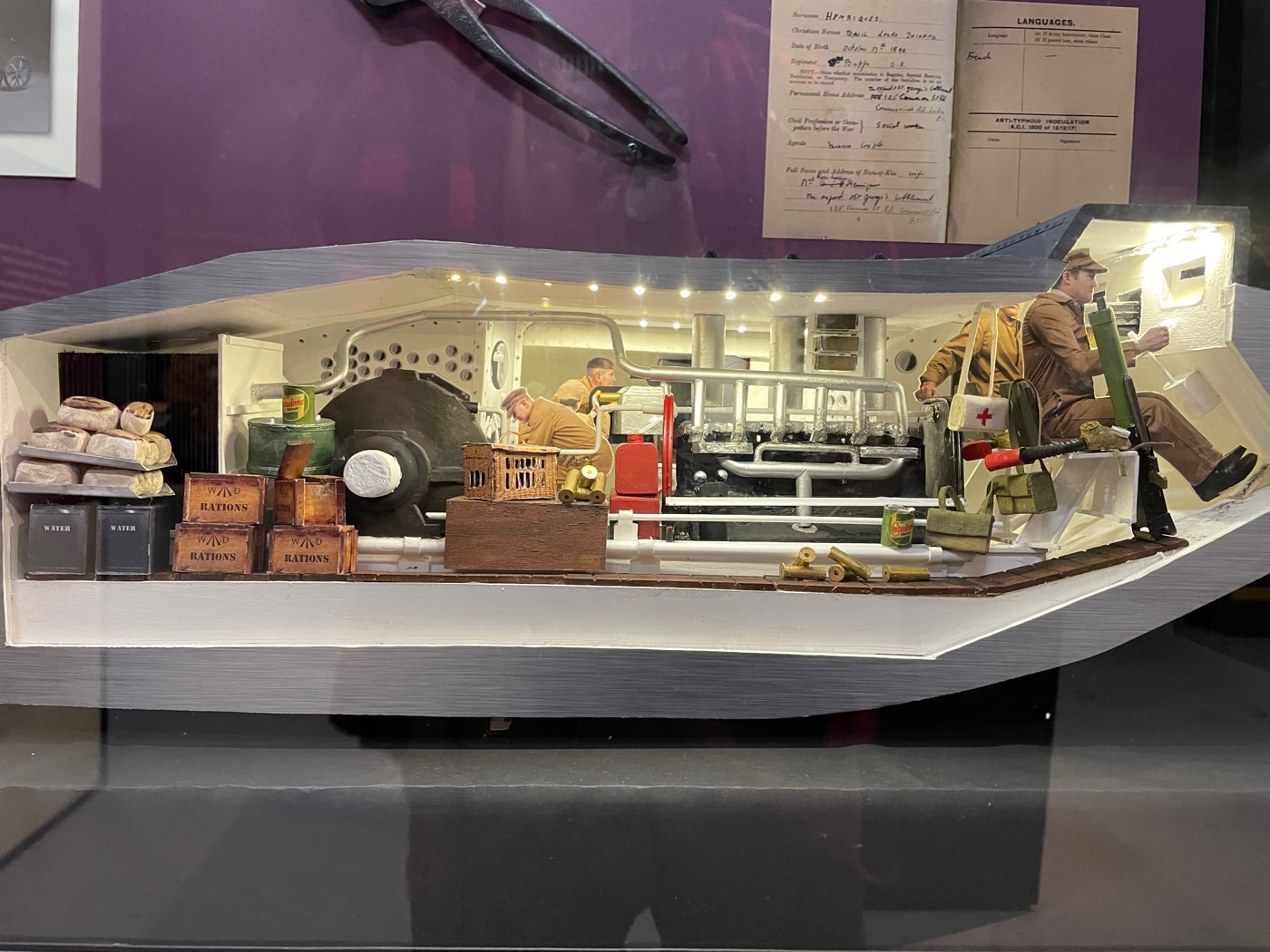
The commander/driver managed the brakes. The other driver tended to the two-speed gearbox. Two gearsmen had responsibility for the secondary gears for each track. The rest of the crew operated the weapons.
Tanker Service — Loud and Hot
Just driving these things was horrible. The interior was cramped, poorly ventilated and foul. Temperatures in action often climbed above 120 degrees F. It was also intolerably loud. As there were no intercom systems back then, the commander typically made his wishes known via hand signals and by smacking on the engine block with a spanner wrench.
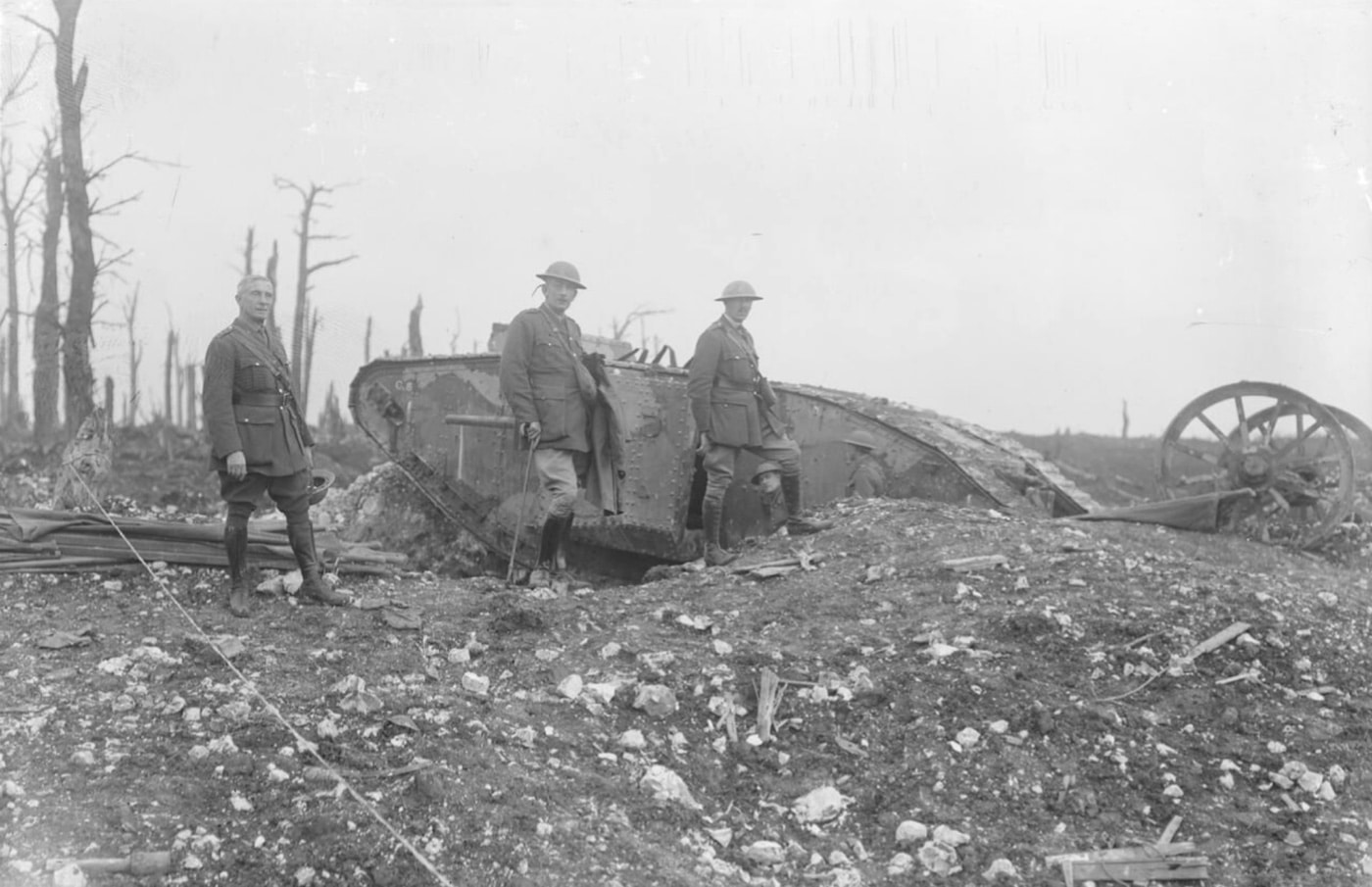
The racket and the primitive state of the art meant that radios were not practical. Communication between vehicles was via flags, semaphore, colored discs and lanterns. Each tank also came equipped with a pair of carrier pigeons that could be launched from under armor to take messages to higher command.
Shrapnel, Spall and Chainmail
One of the perennial challenges involved in operating these early armored vehicles was spall. Spalling occurs when flecks of steel break off and fly about inside an armored hull in response to strikes from projectiles on the outside.
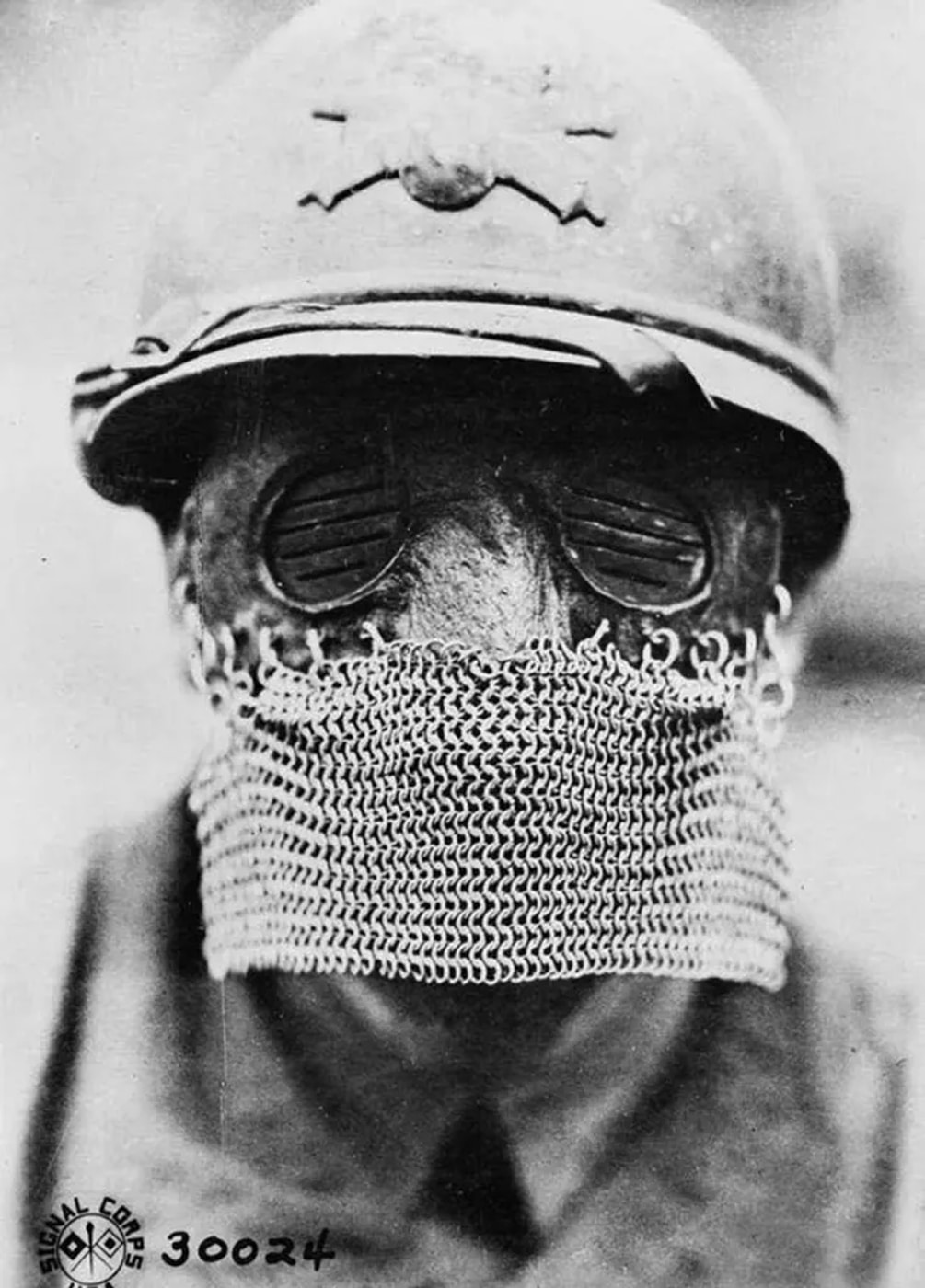
British tankers were issued with chainmail face guards to help protect their eyes from these vicious high-velocity splinters.
[Don’t miss Peter Suciu’s article on the experimental helmets of World War I.]
Tough — But Delicate
While they were undoubtedly intimidating, these huge steel monsters were also fairly delicate. The fuel system was gravity-fed, so the reservoirs were located high in the front of the chassis. Shock from nearby artillery tended to rupture these tanks and flood the fighting compartment with petrol.
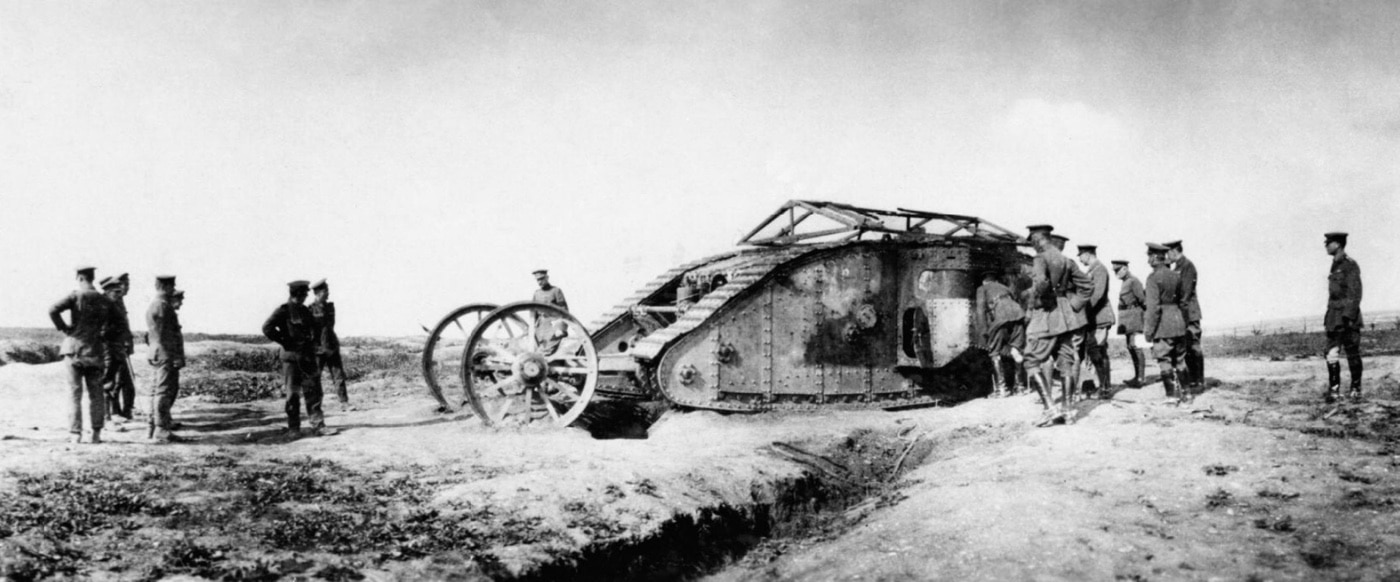
Dedicated salvage companies were formed to remove incinerated crews and recover damaged vehicles.
Combat Performance of the First Tanks
Military history is a predictable saga of weapons and counter-weapons. In response to the introduction of British tanks on the battlefield, the Germans developed something they called K-bullets. These armor-piercing 7.92x57mm rounds could be fired through either Maxim machineguns or Mauser rifles and would penetrate the armor of these first tanks.
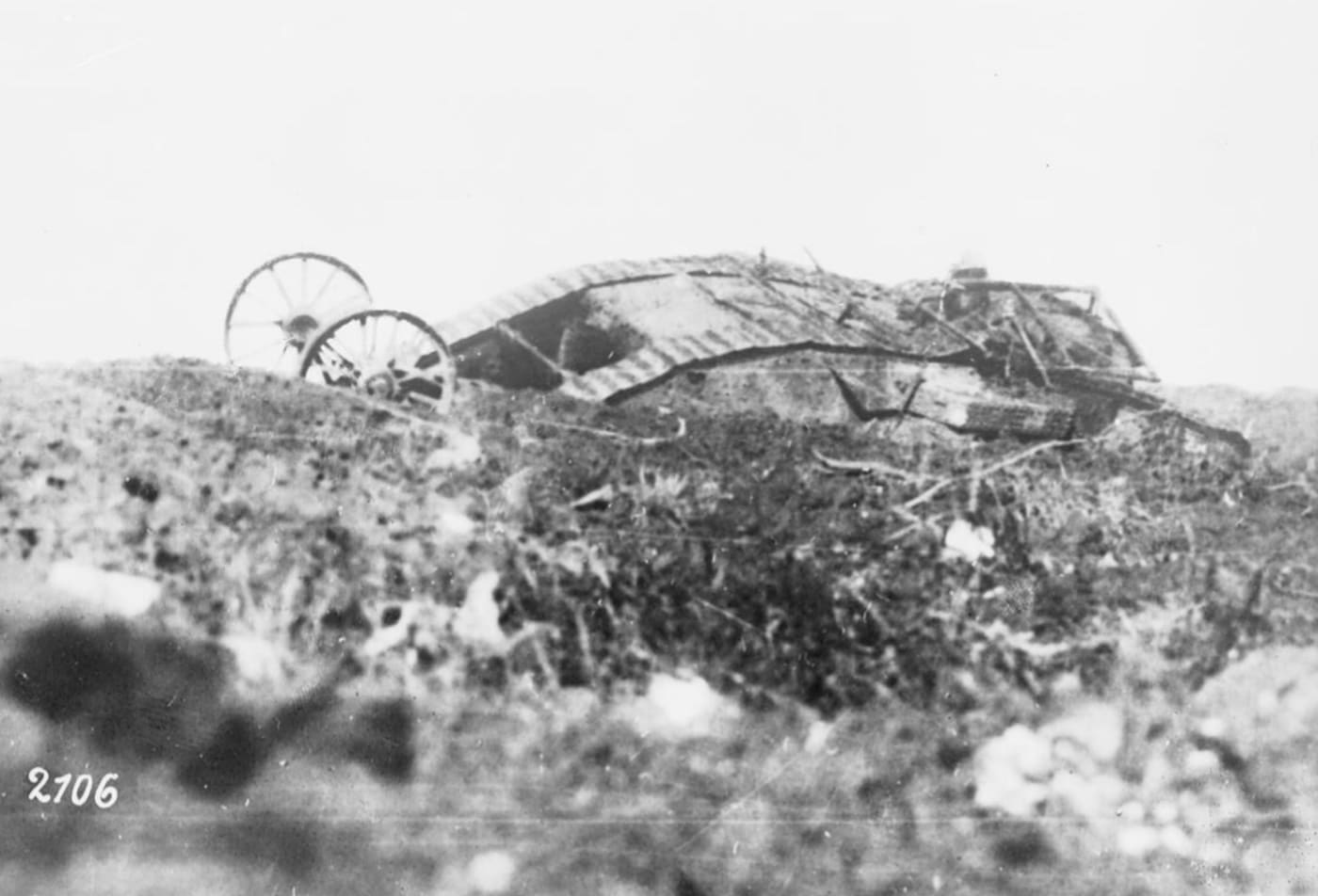
The massive 13.2mm 1918 T-Gewehr anti-tank rifle was basically an oversized Mauser bolt-action rifle firing a high-velocity hardened projectile. Bundled stick grenades and armor-piercing shot for field guns also made the lives of British tankmen miserable, dangerous and brief.
German Mark I Tanks
The Brits did eventually employ tanks en masse. So much so that large numbers were captured by the Germans and used against their previous owners. After Cambrai, the Germans seized around 50 examples, 30 of which they restored to operational condition. Some were used for research and display. Others were re-equipped with German ordnance.
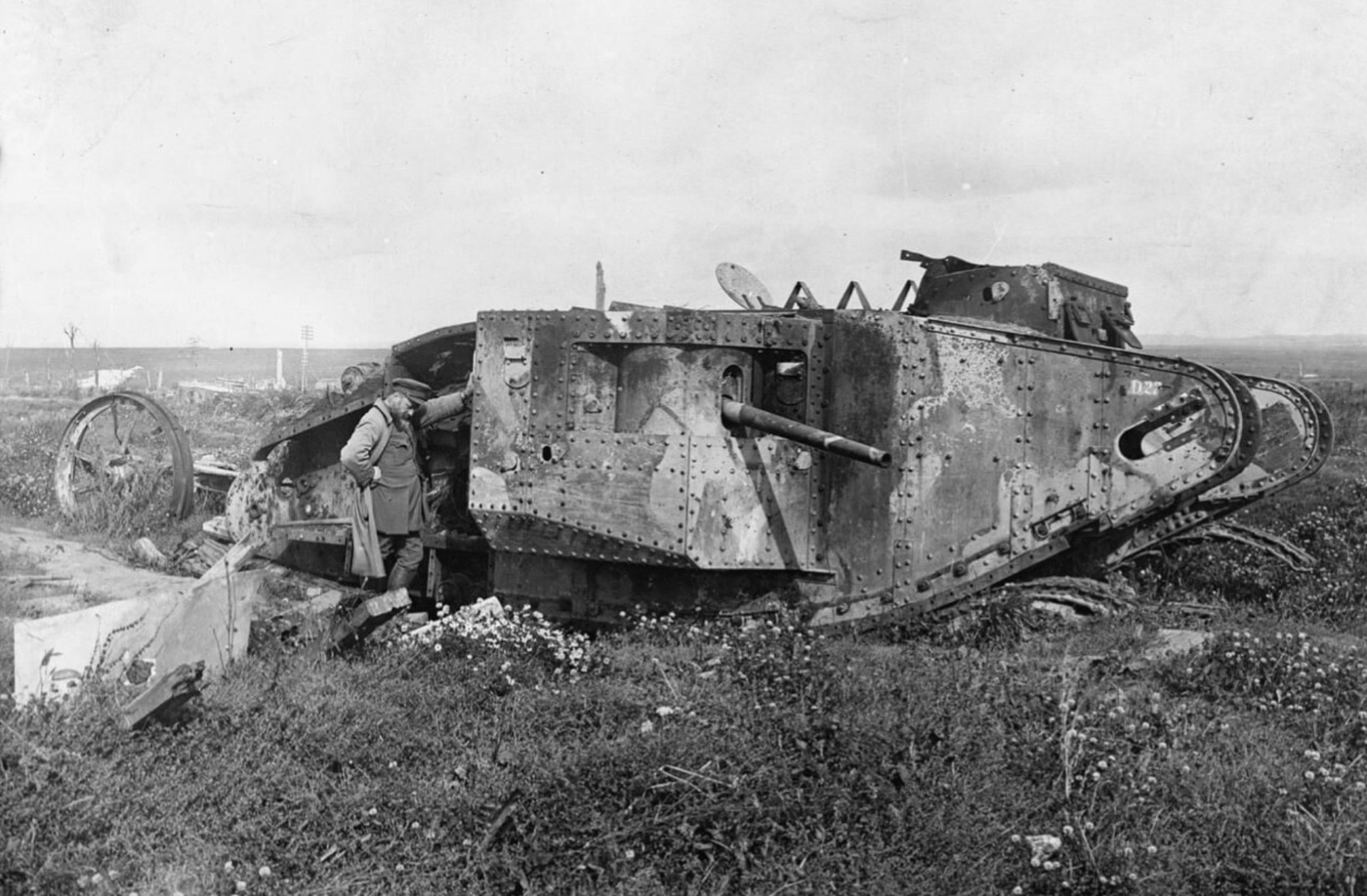
By war’s end, the Germans had captured some 300 British tanks, 170 of which were turned around and used against the Allies. They eventually equipped seven full tank battalions with captured British armor. These liberated tanks were typically painted in German splinter camouflage and adorned with Maltese crosses.
Epilogue — The First of Many
Those early British tanks were produced in 10 different Marks, all of which looked very similar on the outside. A replica featured prominently in the epic movie Indiana Jones and the Last Crusade. The Tank Museum in Bovington, England, currently has eight examples in their collection. Two of these are still operational, though they are no longer driven given the delicate nature of their running gear.
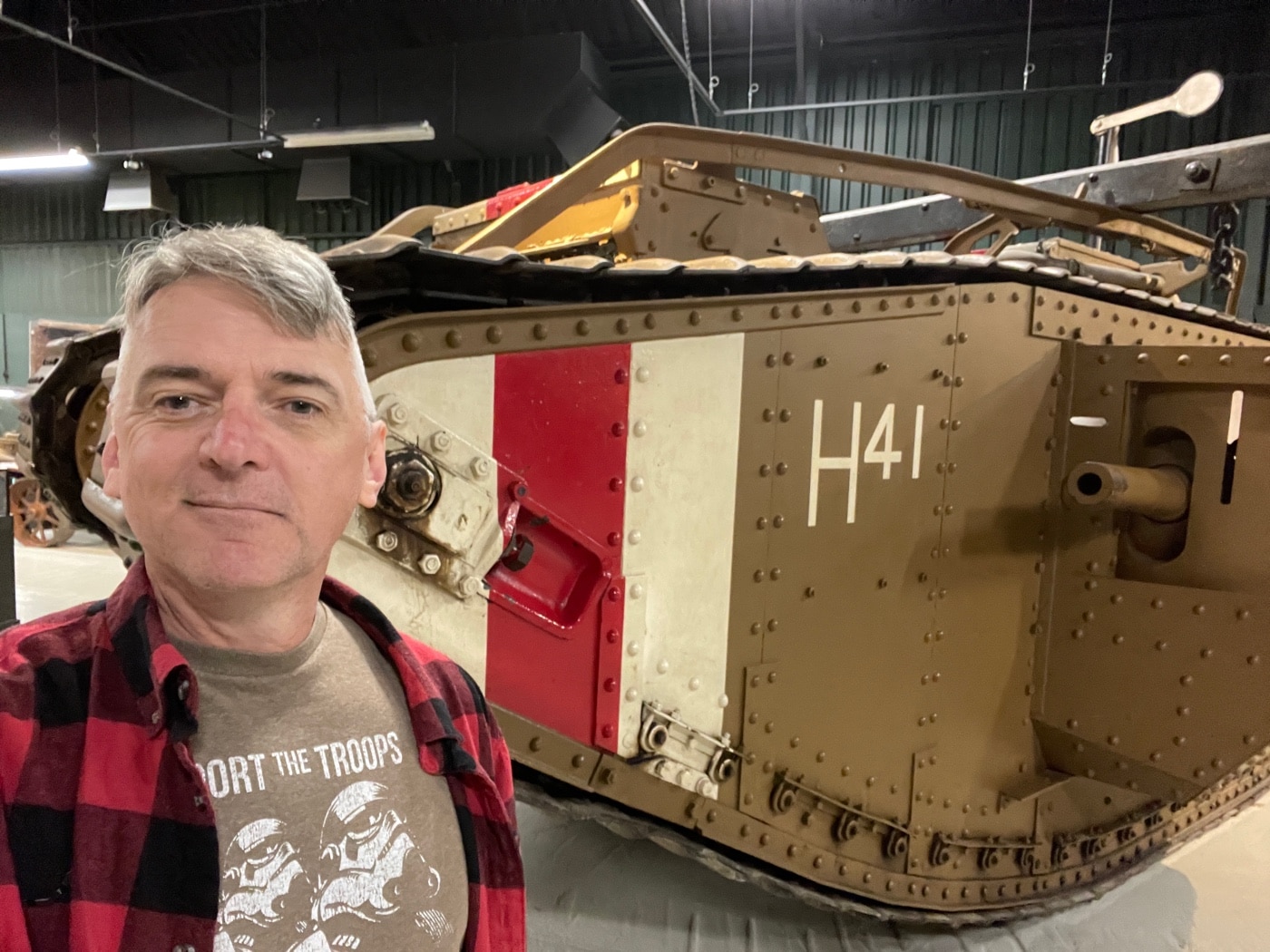
Beginning on that chilly Fall day in 1916, the tank has evolved into what is arguably today’s most influential land combat system. The war in Ukraine has shown us the effectiveness of drones and advanced anti-armor systems, but the rumbling of tanks in the distance still reliably instills dread in the hearts of grunts hunkered down in the earth trying mightily not to die. Beginning as a way to project combat power beyond the fetid trenches of World War I, the tank has gone on to become the armored arm of decision on the modern battlefield. The British Mk I blazed that trail.
Editor’s Note: Please be sure to check out The Armory Life Forum, where you can comment about our daily articles, as well as just talk guns and gear. Click the “Go To Forum Thread” link below to jump in!
Join the Discussion
Featured in this article
Read the full article here

